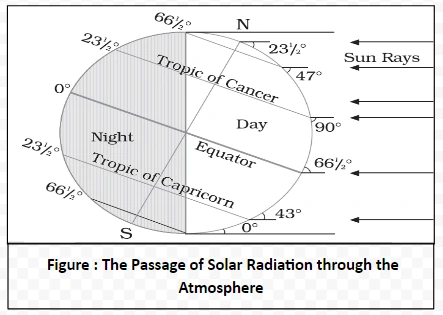![]() 30 Nov 2023
30 Nov 2023
The Earth receives almost all of its energy from the sun. The earth in turn radiates back to space the energy received from the sun. As a result, the earth neither warms up nor does it get cooled over a period of time. Thus, the amount of heat received by different parts of the earth is not the same. This variation causes pressure differences in the atmosphere. This leads to the transfer of heat from one region to the other by winds.

The Passage of Solar Radiation through the Atmosphere
There are different ways of heating and cooling of the atmosphere. These are the following:
<div class="new-fform">
</div>